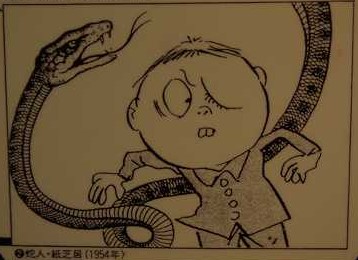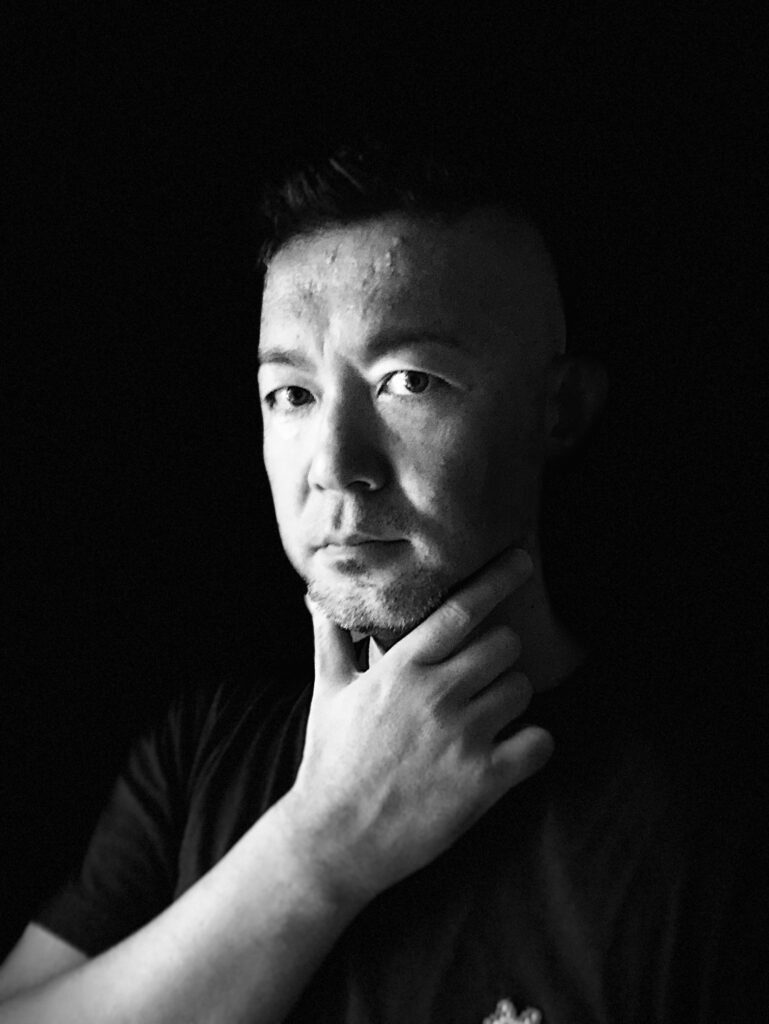- JAPANESE
- LANGUAGE
X
 THAT IS GOOD
THAT IS GOOD
This is a series of articles that says “past and the future” of Japanese subculture, but we can’t even get to the present, or even the future. Hi I’m Kobayashi. In my last article, I talked about how yokai have been visualized over time and have taken root in Japan as a subculture, and about the storytellers who have embodied yokai. In this article, I will continue from the previous article and (finally) talk about the storytellers of yokai in the modern age.
The first person to be mentioned as a yokai storyteller in modern Japan is Shigeru Mizuki, the (late) creator of “Gegege no Kitaro”.
I think there are two major achievements of Shigeru Mizuki.
I don’t have any personal acquaintance with Mizuki (of course), but it seems that he was a very unique character, who liked to sleep in the morning, just like the theme song of “Gegege no Kitaro”, and he was famous for his interesting informal conversations, and although there was a sign posted at Mizuki Productions saying “30 minutes for interviews” for Mizuki’s busy schedule, Mizuki himself actually ignored it and enjoyed hours of conversation with visitors.He also went on fieldwork called “adventure travel” to many places in the world, such as the Dogon tribe in Mali, Africa, the Senoi tribe in Malaysia who can see dreams freely, the Aborigines in Australia, the Indians in Mexico, and the Hopi tribe in the United States. He says that he was able to “feel the yokai” by coming into contact with the spiritual culture of each place.In the jungles of Malaysia, when he showed his book “NIHON Yokai Taizen” to the locals, they had a strong reaction, saying “I know this one” and “I know that one too.
In his manga, Mizuki often appears as himself, where he himself meets spirits and yokai, and Okuninushi no Mikoto stands on his dream pillow. It seems that Mizuki himself was a person who could “see” spiritual things. By the way, I have never seen or experienced such spiritual things, but my stance is that “what we know and can see today is not everything”. If spirits, yokai, and ghosts are energy of some kind, they must have their own wavelength. And I believe that there are people who can tune into those wavelengths intentionally and unconsciously. I think it is very fortunate for Japanese culture that such a shamanic nature, combined with overwhelming drawing ability, has given birth to the yokai storyteller Mizuki and his Mizuki works.
Many people have enjoyed “Gegege no Kitaro” (hereinafter referred to as “Kitaro”) because it has been made into all kinds of media, including manga, anime, live-action movies, stage shows, musicals, novels, and radio dramas. Thanks to Kitaro, yokai have finally become a national entertainment and subculture in the Showa era. However, Kitaro was not always a very popular character.
Kitaro was first created by Mizuki in 1954 as a picture story show. (Incidentally, “kamishibai” is a theatrical art/subculture in which multiple pictures are piled up in a set for each story, and the performer tells the story while showing the pictures one by one. The storyteller would go around the streets with a bicycle carrying a picture-story show and candy canes, hitting the clapperboard or blowing the conch shell to attract children and sell them candy and, when enough children showed up, the storytelling would start. I have never actually seen a picture-story show because of my generation.) Mizuki created four original “Graveyard Kitaro” picture-story shows: “Jajin (Snake Man),” “Karate Kitaro,” “Galore,” and “Yurei no Te(Ghost’s Hand),” which became the starting point of the Kitaro series.


Kitaro was a one-eyed ghost boy born from a graveyard, and the appearance of the eyeballed oyaji, etc. were set from the very beginning. Later, in 1960, Mizuki became a rental book cartoonist and published “Yurei Ikka (Ghost Family)” in “Yokiden,” a weird short comic magazine. It was here that the image of Kitaro that continues to this day was solidified. At that time, however, Kitaro was still positioned as a sinister boy who brought bizarre consequences to those involved with him, not as a friend of humans.

In 1965, “Graveyard Kitaro” was published as a read-along in Weekly Shonen Magazine (Kodansha), published irregularly, and then promoted to an official serial work in 1967. After that, Kitaro was made into an anime in 1968. There was an attempt to make it into an anime when it was published irregularly in Weekly Shonen Magazine, but it didn’t happen because “it’s a yokai story and the title is “Graveyard”, so it wouldn’t get any sponsors……. However, by changing the title from “Graveyard Kitaro” to “Gegege no Kitaro” and getting the sponsor’s approval, as well as changing the content from a “bizarre story” to a “righteous Kitaro exterminating bad monsters” for boys’ magazines and anime, the anime adaptation was achieved and Kitaro became a hero for children. Incidentally, the origin of “Gegege” was inspired by the fact that Mizuki could not say his own name “Shigeru” when he was a child, but instead said “Gegel” or ” Gege”.
The anime I watched in real time was the third season from 1985, but there was something I watched when I was much younger that I remembered and was traumatized by, so I tried to research through my memory and found it.This is the second season of the anime, episode 43, “The Mystery of the Footprints”. The content of the episode is as follows: “In a certain farming village, there was a guardian stone for a demon called Titan Boy. Scientists Nakamura and Yamada think it is a meteorite and smash a part of it and take it home. From that day on, a terrible haunting begins to occur. Kitaro goes to persuade Nakamura and the others to return the stone to quell Titan-boy’s anger, but Nakamura, possessed by a sense of merit, refuses to listen. Eventually, the haunting begins to take its toll on both of them. Yamada’s body begins to slowly disintegrate…” It was a traumatic episode that was highly praised by maniacs, and I still vividly remember the way the body collapsed due to the haunting. (For more details, please refer to this blog : Japanese only)
The introduction of “poetic justice” into the storyline has made Kitarou a hero, but it does not mean that yokai are always the bad guys. There are times when yokai are victims of human development, or when they are used by humans or the mouse man to cause trouble, etc. There are times when the story has a strong satirical tone that reflects the times and the world, and there are many times when the pure essence of Mizuki’s works with strong bizarre elements is faithfully visualized.I believe that the backbone of this work is Mizuki’s love for yokai, invisible beings, and the efforts of the animation production staff to capture this love. These elements are what make Kitaro a work that attracts not only children but also adults, and is loved throughout the ages.
Mizuki is a very prolific writer and has left behind many other works besides Kitaro. His other masterpiece, “Akuma-kun,” is one of his most popular works, as well as “Kappa no Sanpei” and other stories about yokai. He also wrote a comic book based on his own war experience, “Onward Towards Our Noble Deaths”. The classics include “Mizuki Shigeru’s Senkyoukaden,” “Konjaku Monogatari,” and “Tokaido Yotsuya Kaidan.”In “Mizuki Shigeru’s Ancient Izumo,” based on Japanese mythology, he depicts the rise and fall of the ancient Izumo Kingdom from the perspective of Okuninushi, using myths and historical facts from “Kojiki” and “Izumokuni Fudoki.Since Takeshi Umehara also appears in the story, I suspect that he was influenced by the historical view. From the perspective of the victor (the Yamato Dynasty), the transfer of power, which in the historical perspective is called “handing over the country,” is described as “probably not a pretty thing in reality”. There is also a work called “Jomon Shonen Yogi,” which is set in the Jomon period, further back in time from the myth.The first book was published in 1976, and although it is a work of fiction, and therefore different from the current archaeological view of the Jomon, the way it depicts the yogi’s various adventures while facing hunger and death, and their interactions with kami and spirits, is very close to my idea of the Jomon.
This was supposed to be the end of the yokai story, but I started writing and the volume filled up, so I’ll continue next time.

Taketo Kobayashi
ARTSTATION
Taketo Kobayashi (artstation.com)
Instagram ID
@humanoise
After having experience of 3D graphics and animation at Tokyo Institute of Technology creative laboratory, and Gonzo Co., Ltd., Taketo started his own project as an artist. Using digital technology like CG, 3D printing as his “brush”, Taketo creates a wide variety of artworks from 3D printed sculpture to animation. In a collaboration project XSENSE, Taketo utilizes CGI in street art to create murals(Denver, CO, USA), also using his unique style animation for stage design and collaborated with contemporary Noh theatrical group. In addition to creating his own artworks, Taketo curates the group art show “ARTs of JOMON” hosted by Japanese non-profit JOMONISM, keep introducing contemporary artists/artworks influenced by ancient Japanese Jomon culture.(Aomori Museum of Art / Spiral Garden / Denver International Airport / Kuala Lumpur)
It is Taketo’s mission to make invisible things, emotions, energy, next dimensions of consciousness into “shapes”.
Project/Art history(excerpt)
PROJECTS Digital G-O-D, UltraSuperNew gallery, Singapore, Jan 2020
Haw Par Villa RE•MIX
Chinese Cultural Centre, Singapore , Jan 2020
”Light to Night Festival” Projection mapping at Asian Civilization Museum, Singapore , Jan 2020
A SIGN OF THE TIMES EXHIBITION, Singapore , Jan 2019
”ARTs of JOMON” exhibit @ISETAN KL, Malaysia , Aug 2017, curation&direction
“Colorado Crush”, a mural festival in Denver, CO. Sept 2016, created artwork
“DMS” Collaboration with Canon June 2015, created&exhibited 3D printed prosthetic leg
”Oakley Exhibition” Exhibited artworks at Oakley store Harajuku, Tokyo, Oct 2014
AWARDS “Eisen Herz” Ufab Global Creative award Finalist. 2016. 3D printed cover for “Tamiya mini 4WD” using generative design
“More Than Human type-Unicorn” a 3D printed prosthetic leg. Ufab Global Creative award Finalist. 2015
“SC1-EXP” Zushi International Projection Mapping Competition, Grand Prix. 2014
“Yakushi-Nyorai”(2013)
3DCG model for 3D printing. Winning work at Digital modeling competition held by Japan Society for Graphic Science
Original CG animation ‘Matsuri’(May 2010)
Design, modeling, production coordination. A CG animation based on Japanese ‘Jomon’ culture. Created for promotion of Aomori Prefecture. Accepted at Siggraph Asia 2010. (On VIMEO: https://vimeo.com/25144961)